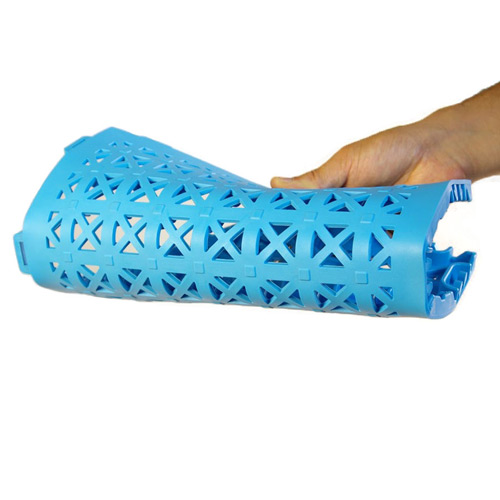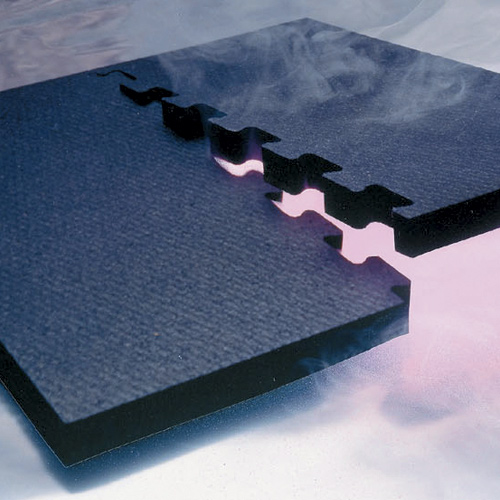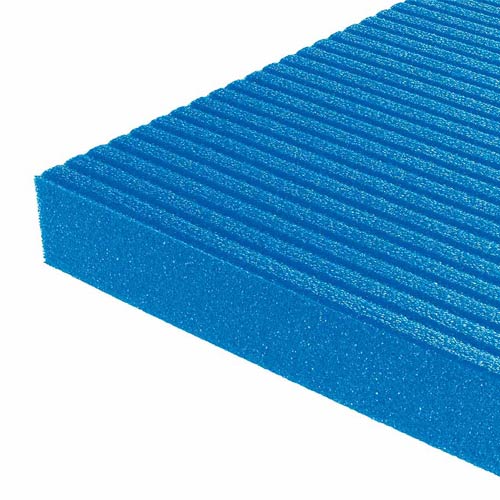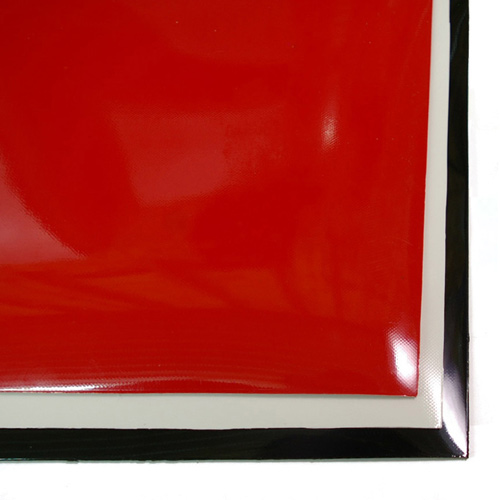Plastic, Foam and Rubber Flooring Myths
Myth #1: Rubber flooring will add cushion and spring to your floor.
Rubber used for flooring is generally a very dense material. While it does provide excellent protection for your base floor, as well as sound and thermal insulation, most rubber floors are quite hard in comparison to foam or plastic floors. Keep in mind that most of these floors are made from recycled truck tires. Truck tires must be fairly rigid to withstand the rigors of tens of thousands of miles of travel. A material soft enough to feel cushion would fall apart or wear through extremely quickly under automotive stresses.Myth #2: Plastic flooring is hard.
Many people believe that in order for a flooring material to be soft and flexible, it must be made of rubber. Not true. The beauty about plastic materials is that their hardness and flexibility options are nearly endless. Most plastics used for flooring provide significantly more cushion than rubber floors and are commonly confused with rubber, due to their pliability.Myth #3: All foams make good anti fatigue flooring
While foam does provide excellent cushioning and adds comfort to your flooring surface, not all foams are created with the same density, which is key for anti-fatigue benefits. Standing on hard surfaces over long periods of time definitely takes its toll on your body, but the same can be said for standing on surfaces that are too soft. Some foams are so soft that they provide very little resistance between you and the hard floor below. Others will keep you off the hard floor, but provide very little stability, increasing the risk of you losing your balance when standing on it. You want to be sure that whichever flooring or material you use for anti fatigue purposes will provide enough cushion to encourage shifting of position, which increases blood flow, while still providing enough support to make standing on it easy.Myth #4: Rubber flooring is great for all athletic purposes.
It is true the rubber flooring is commonly used in athletic flooring applications. Rubber flooring is an excellent solution for gyms where the floor must be able to support heavy weights and equipment and absorb the shock of dropped weights. It isn't a great plan to use rubber flooring for areas where people will be running, changing direction and spinning however. One of rubbers best features is that it is slip resistant, but with activities such as basketball or dance, a certain level of slipping is necessary for safety, and rubber floors are usually too grippy to allow much slippage. When used for these types of activities, rubber flooring can lead to knee or ankle injuries.Myth #5: Foam floors contain rubber.
The majority of all foam flooring is made of of EVA or Polyethylene foam. Although these materials are extremely pliable, much like rubber, they actually do not contain rubber. Foam rubber is a spongy material in which rubber has been manufactured with a foam agent to add air to the material and lesson its density. This ''foam rubber'' material is used in mattresses and furniture cushions but is not durable enough to be used as flooring.Myth #6: Plastic floors are slippery.
The surface texture makes a world of difference in how slippery a floor can become when wet or dusty. The smoother the texture, the higher the risk of any floor becoming slippery. Plastic floors often feature leather or orange peel type textures to provide traction as well as diamond and raised bump, non-skid patterns.Myth #7: Rubber floors are waterproof.
Rubber is extremely moisture resistant. However, most rubber flooring is made of ground automotive tires and can be slightly porous, allowing water to ever-so-slowly permeate through the rubber. If power washed, the water is blasted into these tiny pores and forces them open, allowing the water in. With repeated power washings, this can cause water to become trapped within the flooring and possibly even damage the floor.Myth #8: PVC and Vinyl flooring are completely different.
Vinyl is often the shorthand way of referring to Polyvinyl Chloride (PVC). The term ''vinyl'' actually includes a broad range of thermoplastic chemical compounds that includes EVA, PEVA, PVA and PVB as well as PVC. What makes PVC unique from the other vinyls is the addition of the chlorine molecule, which makes the material extremely fire retardant.Myth #9: Rubber flooring is just as good as plastic for garages
Rubber flooring is commonly used as an inexpensive alternative to PVC or Polypropylene garage flooring. This is fine if your garage isn't used for automobiles. There are some downsides to using rubber flooring when, cars, trucks and even trailers are involved, however. While rubber is strong enough to handle the weight of vehicles, some rubber floors can sometimes experience chemical reactions to some automobile tires, oils and other chemicals associated with internal combustion engines. This can cause the rubber to break down and drastically shorten its life span.While rubber, plastic and foam are great flooring materials, make sure you use them appropriately to get the most out of your specialty flooring.



